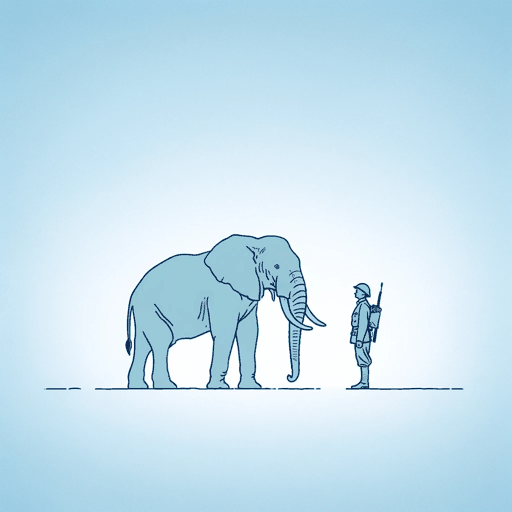61 pages • 2 hours read
Vicki Constantine CrokeElephant Company: The Inspiring Story of an Unlikely Hero and the Animals Who Helped Him Save Lives in World War II
Nonfiction | Biography | Adult | Published in 2014A modern alternative to SparkNotes and CliffsNotes, SuperSummary offers high-quality Study Guides with detailed chapter summaries and analysis of major themes, characters, and more.
Part 1, Chapters 5-12Chapter Summaries & Analyses
Part 1: “The Making of an Elephant Wallah”
Part 1, Chapter 5 Summary: “How to Read an Elephant”
Williams begins to learn more about the forest, the elephants, and the practices of the teak industry. Guided by a local village leader, U Tha Yauk, Williams learns how to make harnesses from jungle materials and locate potable water. He also, somewhat surprisingly, participates in hunting wild elephants—for science rather than trophy. Still, as the author notes, “[w]ithin a year he would be speaking of killing elephants in a very different way” (59).
The author also delves into the logging industry in Burma: while the goal is “to balance regeneration with extraction” (59), the financial demands of the imperial enterprise often obscure any conservationist tendencies. The logging industry is almost exclusively held by European interests, with the Burmese themselves claiming “less than 5 percent” (60) of the teak harvest. Williams himself occasionally accompanies the men into the forest to witness the chopping down and hauling out of large teak trees; unlike other species, the teak trunks are usually hauled out whole—which is where mature elephants come in handy. They also “had other jobs,” such as building “elephant bridge[s]” and “pulling debris out of dry streambeds” (62) and clearing up logjams.
Williams also enjoys watching elephant bath time, where they frolic and are pampered.

